Tom's Guide Verdict
Both Plantronics Rig 500 Pro models (Esports and HX) feature great microphones, but the overall audio quality isn't what it should be for the prices of either model.
Pros
- +
Aluminum design that looks and feels premium
- +
Great sound quality for music
- +
Crisp, clear microphone
- +
Good assortment of accessories
Cons
- -
Unjustifiable price
Why you can trust Tom's Guide
Editor’s Note: We initially tested a version of the Plantronics RIG 500 Esports Edition that had sound issues. We have since revisited our review after testing a separate model.
The Plantronics Rig 500 Pro Esports and the Plantronics Rig 500 Pro HX are, outside of their primary build materials, completely identical in terms of internal components. However, they have drastically different prices: $149.99 for the Esports and $79.99 for the Xbox One-licensed HX. In a surprising twist, the two models possess different pros and cons as well, even with the same hardware under their shells.
While the Esports' aluminum frame is great and the headset features strong sound quality for music, the peripheral can't justify its price when stacked up against the HX, which features very similar sound quality for less than half the price. And neither can completely outshine Plantronics' older headsets, which makes buying either of these builds a dicey proposition.
Design
The die-cast aluminum build of the Esports model goes a long way toward making those headphones attractive. Though the angular aesthetic and abundance of stylistic hexagons rage against the rest of the build's sleek, matte, black-metal minimalism, the needless shapes don't quite stop the Esports model from being wearable in public. The removable mic also boosts the headset's overall fashionability.
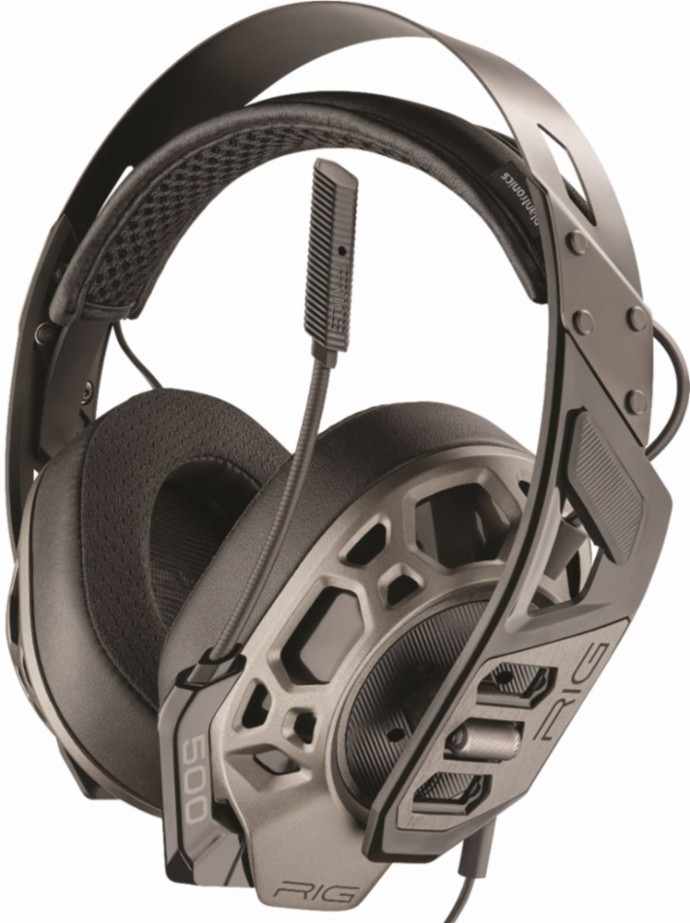
As for the HX model, it looks somewhat tacky due to its excessively angular design and plastic build. Add the HX's gold highlights, and this striking headset won't fare well in public, even though it features a removable mic.
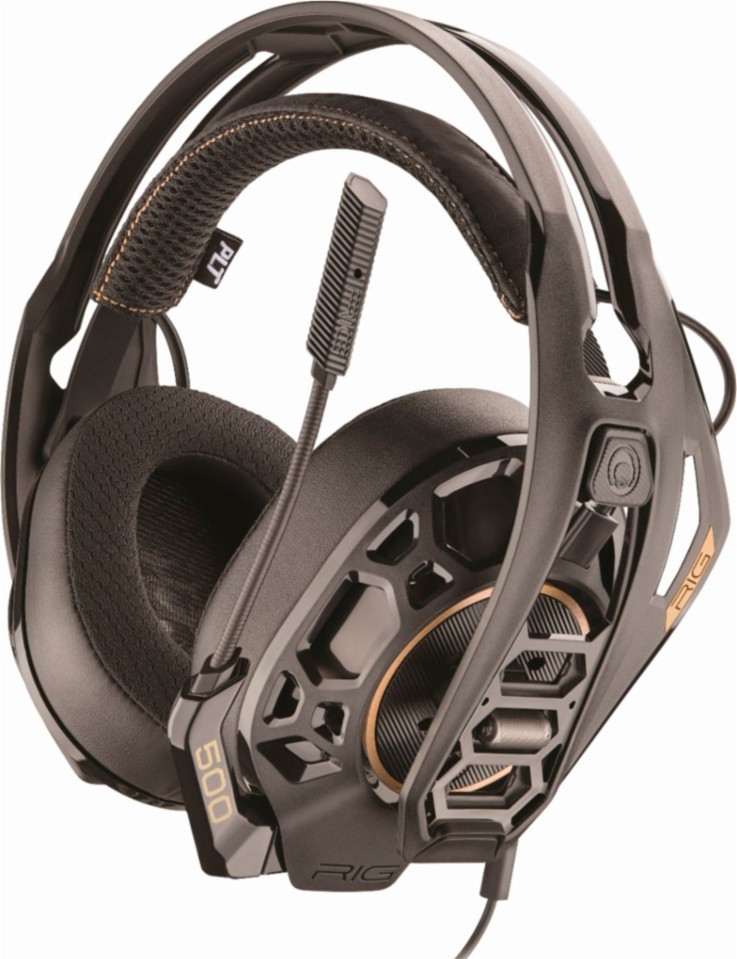
Comfort
The Esports model's aluminum build has a little bit of squeeze due to its metal frame's rigid shape. The plastic HX, which is more flexible, feels much more comfortable. This difference in tightness is easy to observe when laying both sets of headphones on a table. The Esports' cups, in a resting position, touch at the bottom edges, whereas the HX's have a bit of a natural gap. However, both sets of headphones are lightweight and totally viable for long gaming sessions; the HX just has a slight comfort advantage.
Gaming Performance
The Rig 500 Pro Esports model is good for gaming, if a bit underwhelming for its price bracket. The headset isolates sound effectively and provides good locational audio cues, though it's not quite as precise as one might hope.
Get instant access to breaking news, the hottest reviews, great deals and helpful tips.
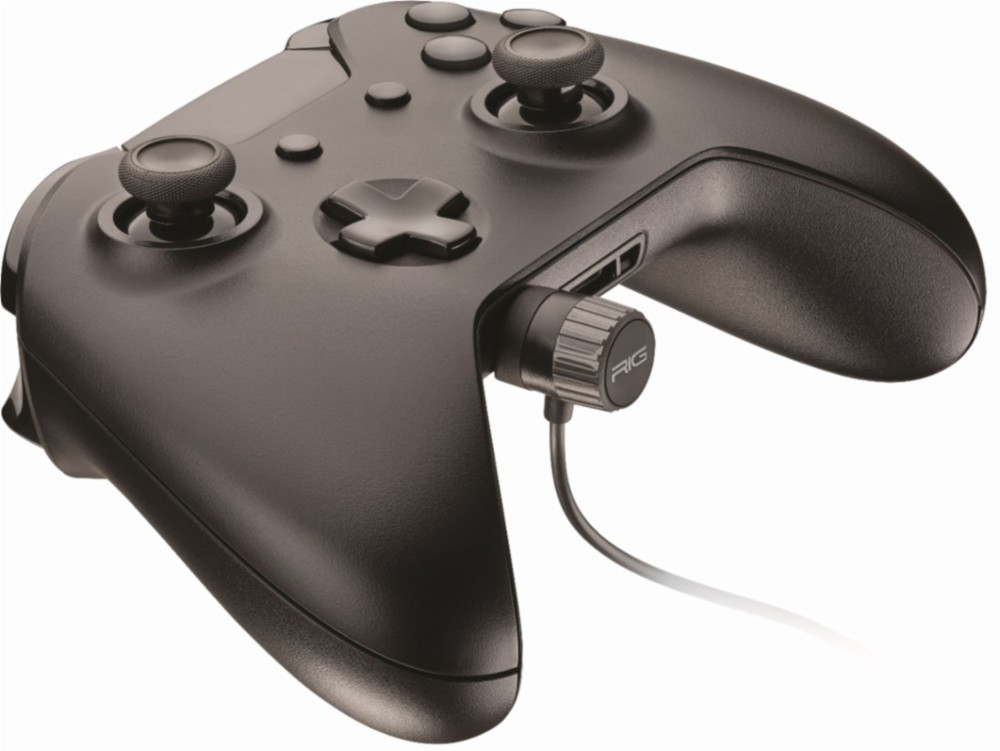
Take Star Wars Battlefront II (2017), for example. During gameplay, the blaster rifle shots echoing from 50 yards away had a volume notably distinct from that of the shots being unloaded within 5 feet of my avatar. This meant it wasn't hard to judge what the most immediate threat was, since only relevant sound effects took priority. Additional sound isolation came in the form of the headset effectively communicating whether a threat was coming from the left or right, though the headset wasn't great at delineating intercardinal sound cues. For the headset's price, it would've been nice if it had sported a higher level of clarity and precision in this department, but that doesn't change the fact the Esports' approximations were quite good as-is.
MORE: The Best Headsets for Immersive Gaming
Halo 5: Guardians also benefited from the headset's competent sound balance and isolation, though to a slightly lesser degree, since the maps I played on were filled with walls and hallways. Therefore, sound was inherently less prone to traveling.
The Esports' solid audio extended into fighting games, too. The headset did a good job contrasting characters' voices, their attacks and the background music. Black Canary's screeches soared over Swamp Thing's meaty vine attacks and Scarecrow's chains scraped against Flash's baritone voice, resulting in clear sound differentiation and distinct noises.
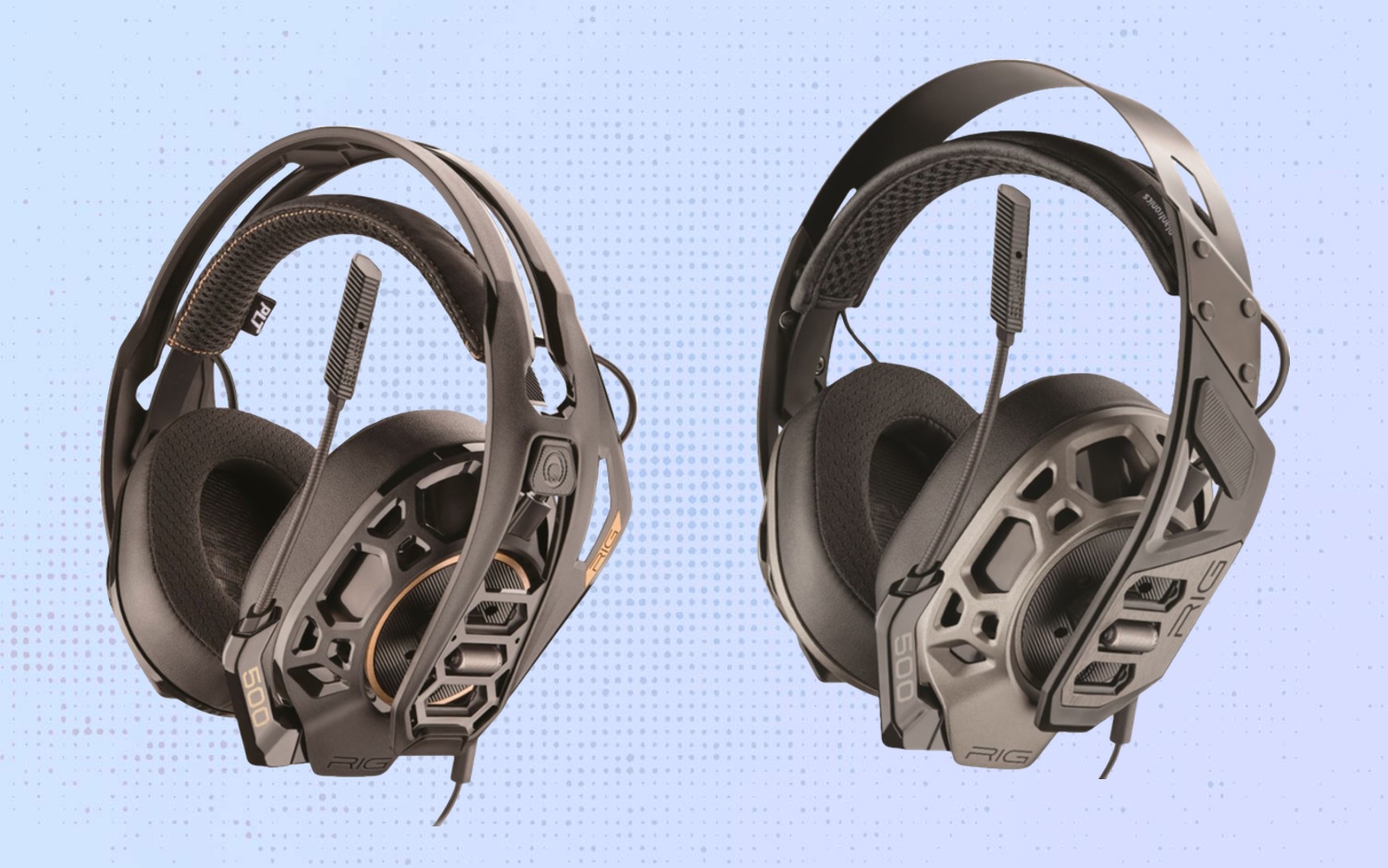
With all of these games, the raw audio quality itself was solid. Every sound was loud, weighty and reverberated satisfyingly within the headset.
On the Rig 500 Pro HX model, the noise isolation and sound quality were comparable, though not identical, to the Esports Edition. Given the HX's looser, hollower build and slightly boxier sound quality, I have to imagine it was the plastic and few extra millimeters of sound travel that resulted in a very minor, albeit noticeable, dip in audio quality.
Music Performance
Though this flaw is slightly worse on the HX model, the Esports variant has a very small amount of boxiness to its music output quality. Unless you're deliberately listening for it, though, the distortion is not noticeable.
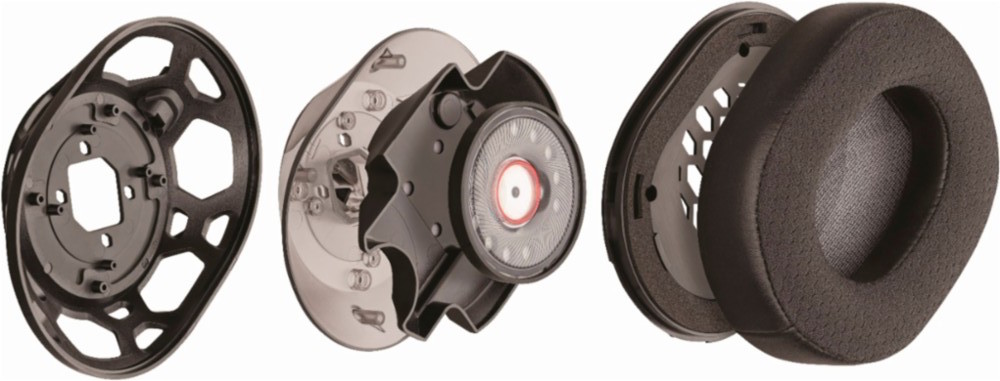
Beyond that observation, I was impressed with the sound quality of both headsets. Their internal technology is identical, as both models sport 50mm drivers, a sensitivity of 111 dB SPL/V and a frequency response range of 20 Hz to 20 kHz.
These specs result in punchy bass, slightly recessed mids and perfectly relaxed treble. The three tiers are balanced well. Songs like Olivier Deriviere's "The Kid X-Mas Show" don't deafen the listener with sharp, ear-splitting electronic bells, but instead soothe the ear with slightly softer high pitches and punchier bass hits.
The minorly recessed mids are apparent only in bass-boosting songs, like Selena Gomez's "Back to You," where her voice, as it's trailing off at the end of a verse, occasionally sinks into the buzzes of the synth. However, in less-bass-intensive songs, like Pilot's "Magic," the balance sounds absolutely perfect.

As a bonus, the Rig 500 Pro handles high volumes quite well. At the high ranges I tested, the sound never distorted. If anything, the buzz of the bass only got better as the overall noise got louder. This was especially apparent in Steve Jablonsky's "Nest."
MORE: How to Stream to Twitch
Features
The Rig 500 Pro, in both its HX and Esports iterations, sports the same four main features: flip-to-mute microphones, secondary headbands, noise-isolating ear cups and Dolby Atmos.

The mic is capable of picking up voices with crystal clarity while negating background sounds. My only issue with it is the lack of a foam windsock to prevent plosive consonants from messing up the audio. Otherwise, the mic's quality is remarkably sharp.
The secondary headband is a welcome addition as well, keeping the headset secured onto your head while never pressing down hard enough to be uncomfortable. It remains one of the best features of Plantronics' headsets.
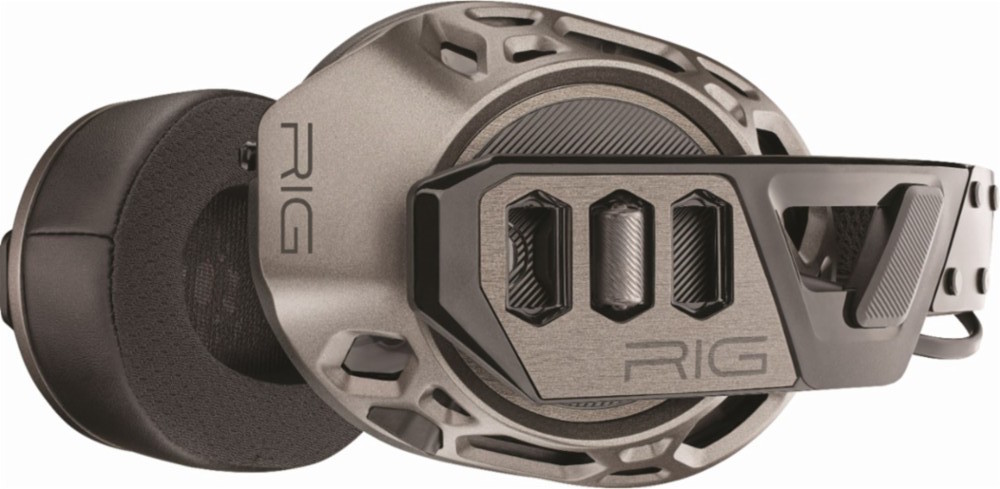
As for the "noise-isolating design," neither headset truly has that. The ear cups on the headsets aren't capable of blocking outside noise very well, though the Esports' slightly snugger fit and metal lining do help keep out just a bit more external sound than the HX version does.
Both headsets are equipped with Dolby Atmos, in case you plan to play any Atmos-enhanced games (though there are relatively few on the Xbox One, which partially defeats the purpose of HX's Xbox-centric Atmos advertising).
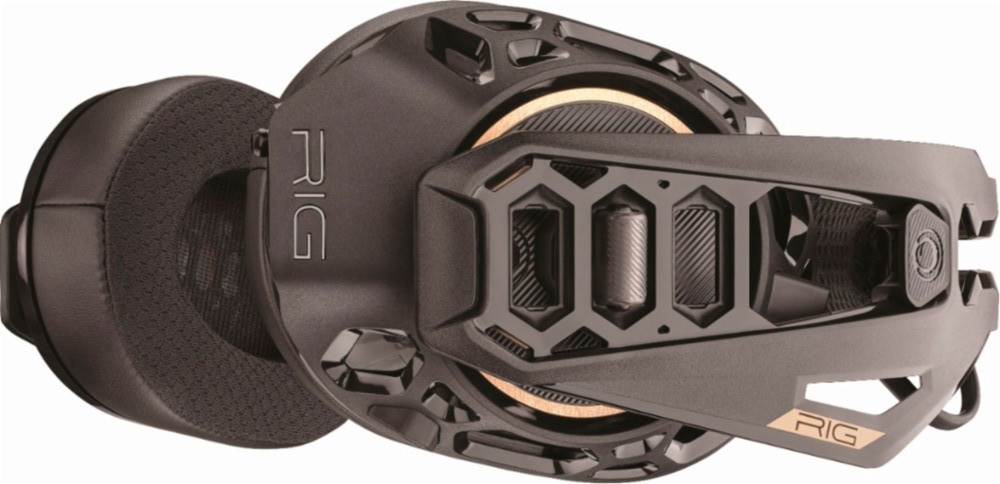
Where the two Rig 500 Pro headsets differ is mainly in their accessories. The Esports model comes with an extra set of ear cushions, as well as an extra audio cable designed for PCs. Both come with an Xbox-specific audio cable, which features a jack designed to prevent the cord from swiveling once it's attached to an Xbox One controller, but the jack's cylindrical shape makes it a bit of a hassle to use with a laptop.
The Xbox-specific audio cable works well enough. However, the volume knob attached to its jack feels like cheap plastic, and I always worried I'd snap it off just by turning it.
MORE: The Best PC Games to Play Right Now
In comparison, the Esports' additional PC audio cable fares much better. Not only does it feature normal, non-conical jacks on both ends, but it also has a traditional volume slider made out of thick plastic with a rigid up-down switch. This cable feels higher-quality than its Xbox audio cable counterpart.
Bottom Line
Both versions of the Rig 500 Pro are OK, but neither is great. The Esports version sports a stylish and sturdy aluminum build, solid overall sound quality and a good assortment of features. However, its price is preposterously high, considering its incremental differences from the Rig 500 Pro HX.
As for the HX, its plastic build and visual design make it a less attractive headset than the Esports model, and its lack of accessories is a noticeable shortcoming. However, the HX's price makes it an easier hypothetical purchase to swallow than the Esports model.
Both headsets have great microphones, strong internal hardware specs, Plantronics' signature headband and a few neat additional touches. Still, if you're aiming for a better headset in the HX's price range, just go with Plantronics' Rig 400. It has slightly better sound quality for a fraction of the cost. And if you're dead set on spending a premium for headphones with great gaming sound quality, consider the Turtle Beach Stealth 700 headset before you commit to the Rig 500 Pro Esports.
Robert Carnevale is a News Editor at Windows Central. In the past, his work has appeared on other sites, such as Tom's Guide, Tom's Hardware, Laptop Mag, MSN, Wired, Looper, and more. Also an author, he has written a novel, Cold War 2395. He loves Sci-Fi and Sonic The Hedgehog.
